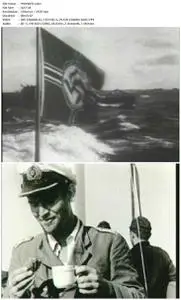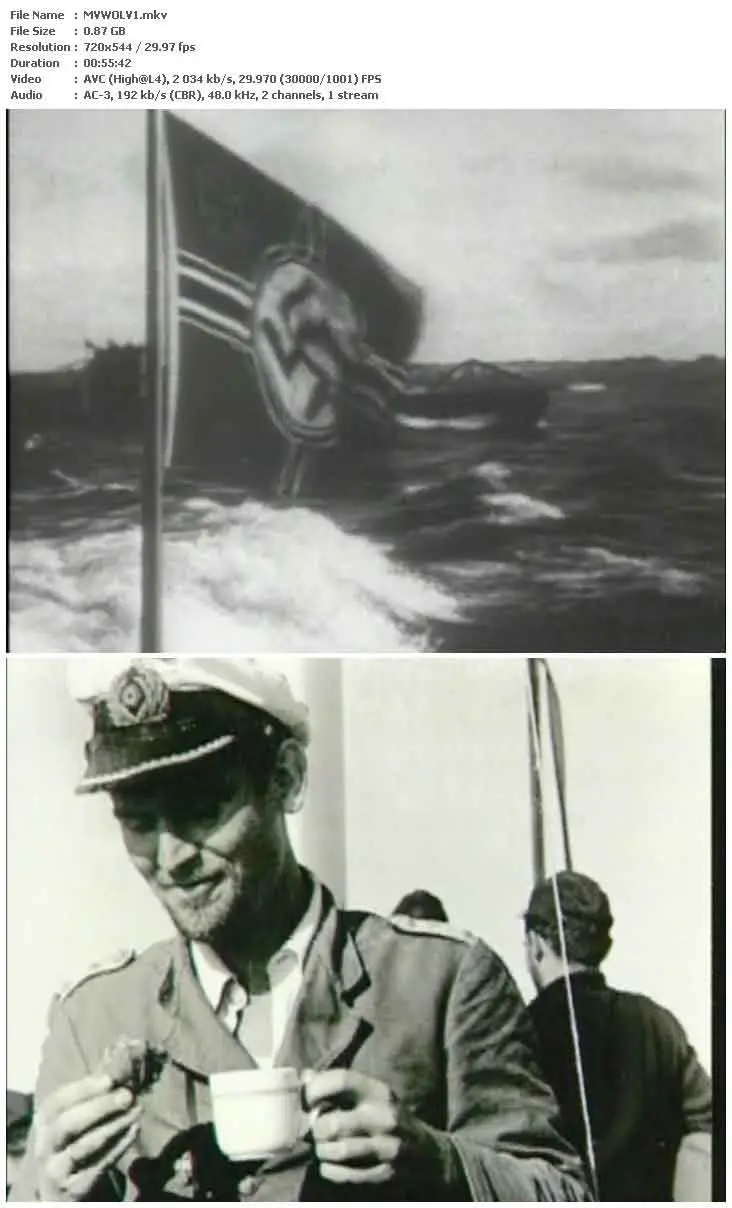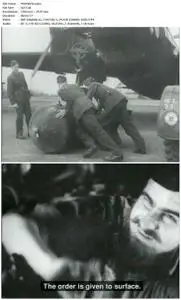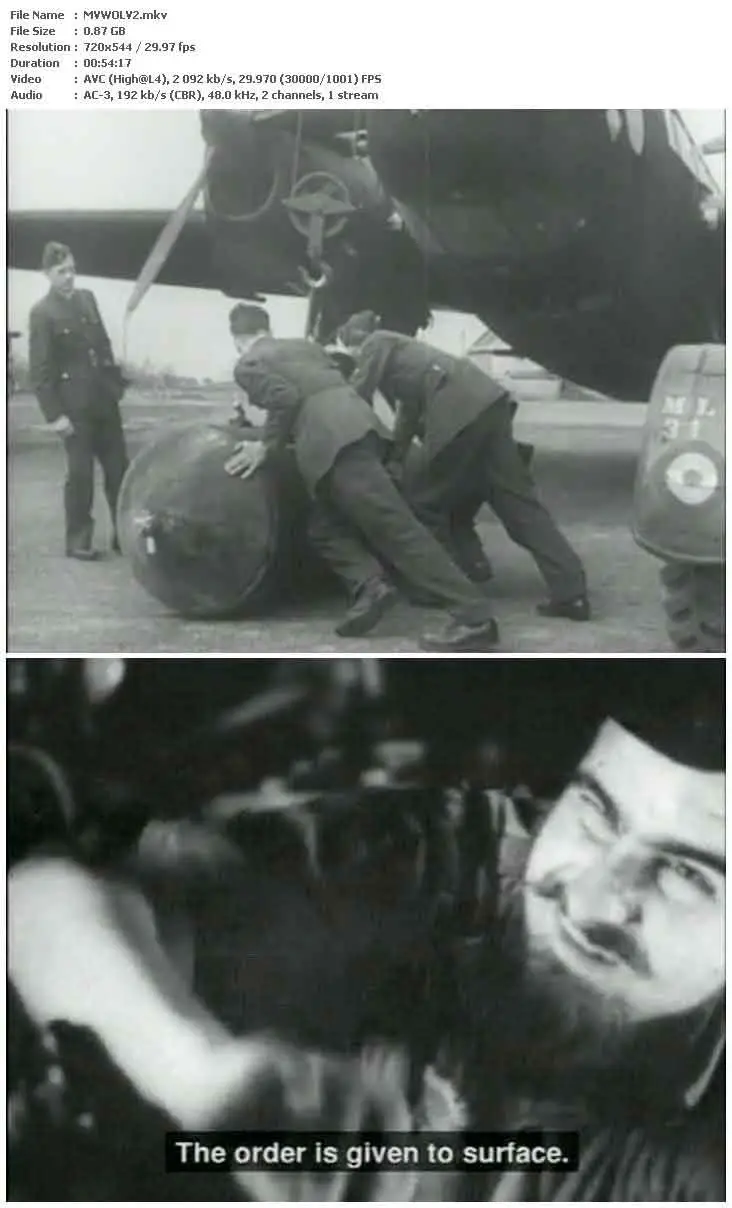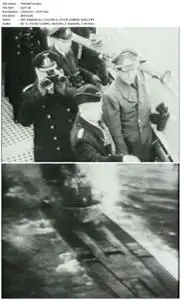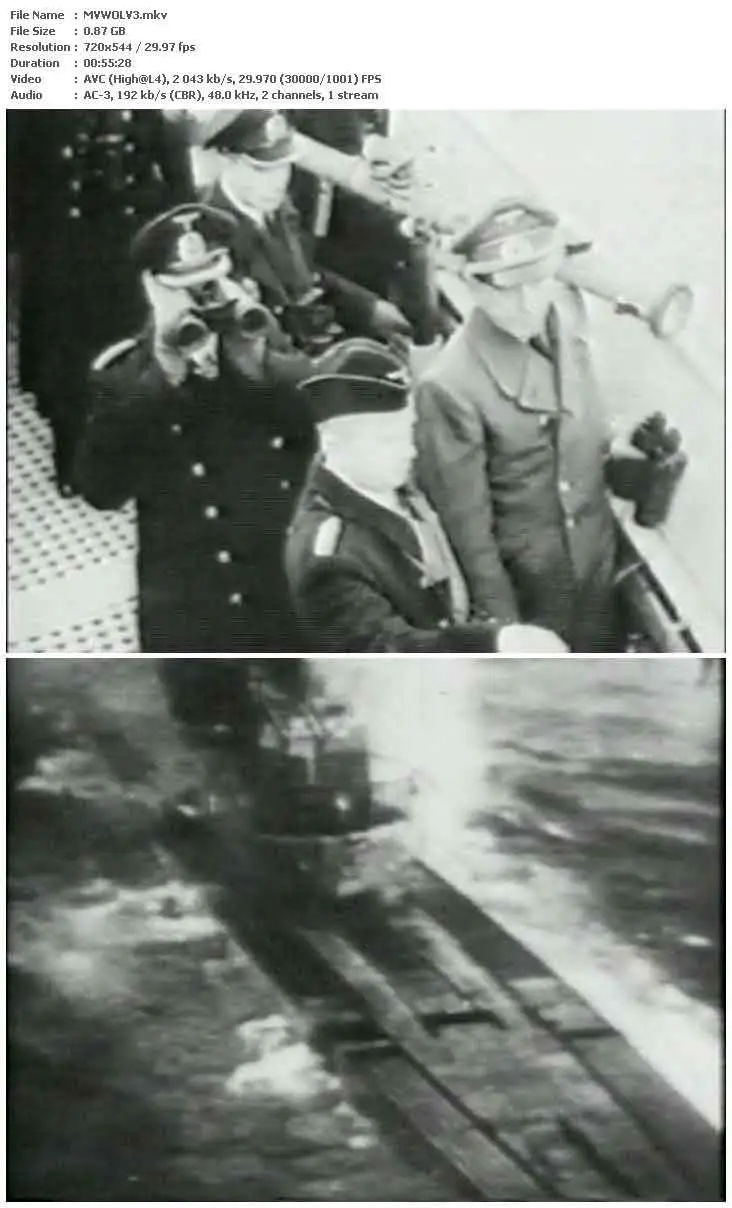Chronos Productions - The War Archive: The Grey Wolves (1998)
DVDRip | 3x~55mn | 720x544 | MKV AVC~2000Kbps | AC3@192Kbps 2CH | 2.59 GiB
Language: English | Genre: Documentary | Subs: None
DVDRip | 3x~55mn | 720x544 | MKV AVC~2000Kbps | AC3@192Kbps 2CH | 2.59 GiB
Language: English | Genre: Documentary | Subs: None
This War Archive set of exclusive programs presents the most comprehensive and definitive archive of Germany's U-boats and their warfare strategies ever compiled as a series. The U-Boat success in the North Atlantic almost brought Britain to its knees, and eliminated the last impediment to the realization of Adolf Hitler's dreams!
New footage helps us understand the on-going battle between the hunter and the hunted beneath the cold gray waters of the North Atlantic. These programs depict the course of the U-boat's war throughout WW2 from footage taken by German cameramen.
Part 1: U-Boats 1939-1941
For Kapitaen zur See and Fuehrer der U-boote Karl Doenitz the outbreak of war between Germany and the United Kingdom in September 1939 found the submarine arm of the Kriegsmarine unready for conflict. As a former submariner in the Great War Karl Doenitz was the vocal champion of the building of a large U-boat arm in the new German Navy but had to watch as the bulk of actual and planned naval re-armament after 1933 was directed towards the construction of a large surface fleet. He remained convinced that only a powerful U-boat arm could defeat Great Britain, the numbers available to him to set about this task in 1939 was paltry. In the first part of the war Germany thus conducted its submarine campaign against the UK with a limited number of boats. Nevertheless, Doenitz's 'Grey Wolves' were still able to inflict substantial losses on vessels carrying Britain's lifeblood, especially after May 1940 when occupation of ports on the French Biscay coast transformed Germany's strategic position and gave the submarines direct access to the Atlantic shipping lanes. This film depicts the course of the U-boat war in it's initial phase in vivid images captured primarily by German cameramen with much being presented to the viewer for the first time. Aces such as Kretschmer, Prien and others are seen both at sea and being feted at home where they accorded the status of national heroes. Naval strategy, intelligence coups, tactics and equipment employed by both hunter and hunted, above and below the waves are examined in detail and also serves as a backdrop to coverage of the much wider U-boat war that emerged from late 1942.
Part 2: U-Boats 1942-1943
The first six months of 1942 saw the war assume a truly global dimension with the entry of the United States into the conflict. For the U-boat arm, the heavy coastal traffic off the eastern seaboard of the U.S. provided such fertile hunting ground that the high number of vessels sunk led this period to be christened by the submarine crews as the 'second happy time'. The belated introduction of convoy tactics by the US Navy saw U-boat victories off the U.S. coast sink to a low of just three in July 1942. While U-boat numbers had increased – 249 on operations and in training – this figure disguised a dispersion of effort with submarines in action in the Arctic, in the Mediterranean, in the South Atlantic. With the bulk of this total in training and many others in dock Doenitz still had the problem of having too few submarines actually on station in the decisive North Atlantic. He now set out to exploit the 'gap' in the mid-Atlantic where convoys were beyond the range and protection of long range allied aircraft. By 1943 with more boats available 'Wolf Packs' exploited this 'gap' to inflict heavy losses on the convoys with 120 ships sunk in March – the high point of the U-boat campaign in World War II. In volume two of the 'Grey Wolves' this story will be related with film covering the building of U-boat pens in France, the training of the new crews in the Baltic, 'Milch Cow' operations, Japanese subs in St. Nazaire and all the other elements that go to help understand the on-going battle between hunter and hunted above and beneath the cold, grey waters of the North Atlantic – the most decisive theatre of World War II.
Part 3: U-Boats 1943-1945
With the defeat at Stalingrad, the belated need for total mobilization was accepted by Hitler and the slack in German production capacity was taken up in an attempt to produce the equipment needed to service a wider and much longer war. For Doenitz, now Commander in Chief of the Kriegsmarine, the sea was now the U-boat war. A new program for increased production was introduced – 27 Type VII boats a month by the end of 1943 and is illustrated on this film by the activities of the Blohm and Voss yards. However, it was already too late for the U-boat arm, for the allies had moved to close the 'gap'. Large numbers of long-range aircraft, new radar, new weapons and new tactics served only to raise U-boat losses in the Atlantic after mid 1943. By the end of that year Doenitz had lost 237 submarines, 242 in 1944 and 151 in 1945. Increased production and expansion in training could not service such losses. Even investment in new technology – the revolutionary Type XXI boat and adoption of the schnorkel device – all came too late to make any impact on Germany's declining military situation after late 1943. This final chapter of the 'Grey Wolves' war is told with fascinating footage covering all aspects of this story. It ends with film of the one man 'Biber' submarine – a last ditch weapon in the face of imminent defeat and the arrest of Doenitz in 1945 - as Hitler's nominated successor and Germany's last Fuehrer!




